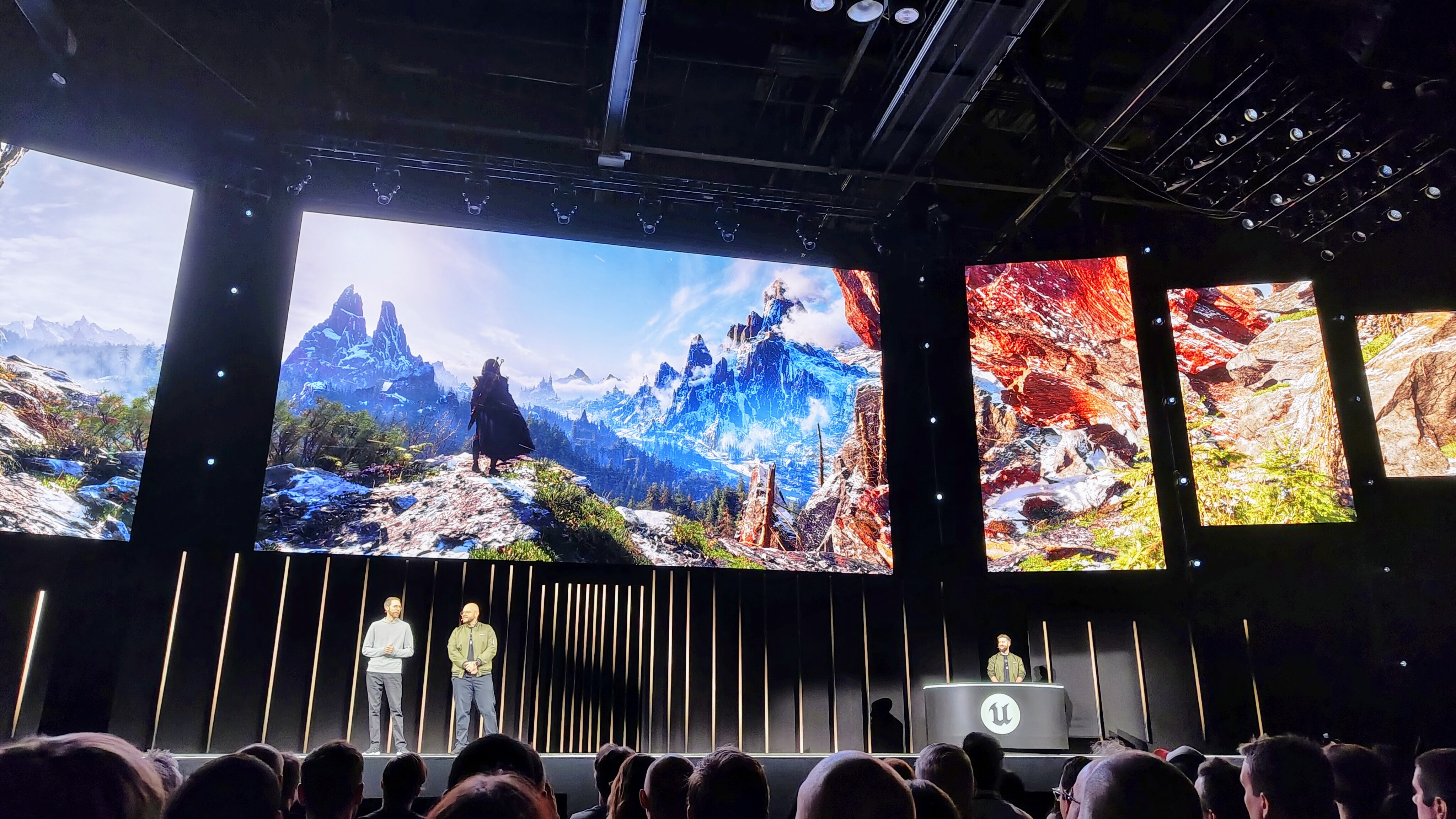The secrets of seasonal horror Krampus revealed
Amidst the Star Wars hype, you might have missed Krampus, a seasonal horror fantasy film brought to life by Weta Workshop.
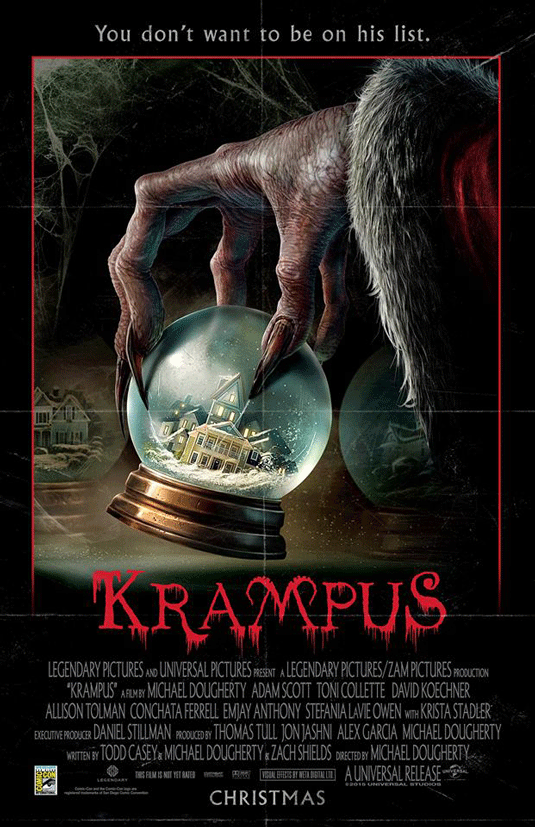
If you're hankering after an alternative Christmas film, Krampus may be just the thing. Director Michael Dougherty's new horror/fantasy/comedy film is based upon the horned figure from Germanic folklore who, during the Christmas holidays, punishes children who have misbehaved.
And Legendary films and the VFX magicians at Weta Workshop have certainly done a job in creating a fearsome anti-Santa in this new cinematic release.
Similar to the blockbuster of the season, Star Wars, the film crew have opted for mainly old-school practical effects and props, designed and created Weta, blending them with digital VFX to bring them to life on screen.
Weta's digital division helped out on the aspects where physical props, animatronics and prosthetics just weren't sufficient. "Aside from a single shot where we added a tongue to Krampus none of the practical effects needed any enhancement," reveals VFX supervisor Kevin Smith.
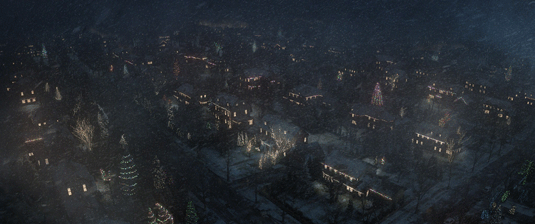
Krampus director, Michael Dougherty, was keen to get the input of Weta's creative team, giving them a huge amount of freedom when it came to creating scenes. "Even though there were only about 150 shots, we touched, in some aspect, almost the entire movie," Smith says. "40 different sequences in Krampus have some kind of visual effect.
"Ordinarily when we do a 150 shot show it's one or two sequences of the same effect or some creature or one environment. Krampus had more sequences than some 1000+ shot shows we work on."
Weta Digital's work included set extensions and digital snow and atmosphere to enhance the exterior sequences, to give the movie a feeling of size and scope.
You better watch out!
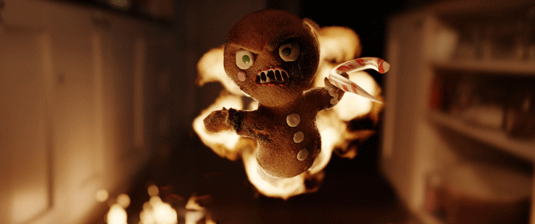
Krampus' minions were generally all practical costumes and puppets, with one exception – the Gingerbread Men! "The attack of the gingerbread men was something that couldn't realistically be done practically so we did the gingerbread men digitally," Smith says.
"We created these mischievous little trouble makers digitally," adds animation supervisor, Dave Clayton, "and they were a lot of fun to bring to life.
The brief here was to make them act like 'little a*#holes'
"The brief here was to make them act like 'little a*#holes'. Their simple design and lack of fingers and toes lent itself to kind of bouncy, dinky animation style, and we were able to try out different ideas really quickly and easily."
The digital team also tackled Omi's flashback, "a stop motion style digital animation sequence". "Omi's flashback was a standout for me. It was such a departure from the kind of work we have done in the past," says Smith.
The ghost of Christmas Past
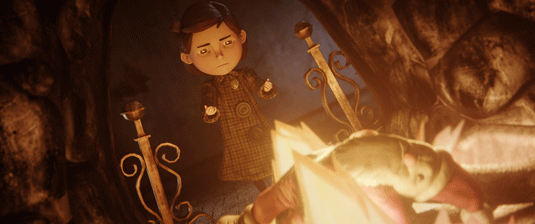
Clayton added a stop-motion sensibility to this animated flashback sequence – revealing the family's historical link with the monstrous Krampus, through Max's grandmother, Omi.
"She recounts the story of how she came to meet Krampus himself. It's a gem of a sequence, and tells a beautiful yet haunting tale," Clayton says.
Pulling their frightful creature straight out of Germanic folklore, they opted to look back to European heritage once again to inform the animation.
"We created the entire sequence in CG, but our visual goal was a stop motion short film aesthetic," Clayton comments. "Michael Dougherty wanted the feeling that this piece of animation had been crafted by an incredibly old yet talented Austrian stop motion animator, and the film reel had been sitting in his basement for generations, waiting to be unearthed."
It was awesome to work on a film that used primarily practical effects
The team were given a great deal of freedom in the creation of the flashback. "We started with only Omi's audio narration and some very evocative concept art," Clayton says. "Then – Michael set us loose!
"It was just like creating an animated short film. We used storyboards and rough pre-vis to create an animatic, which we edited together with temp music and sound effects."
The team experimented until the director was happy and they were ready to split production shots and start building. From here, all their decisions were based on how they could make it feel more miniature, how they could capture the essence of stop-motion, feel the presence of an artist's hands, and in Michael's words, "let there be imperfections".
"He really wanted to respect the limitations that our old Austrian Animator would have faced," adds Clayton. "It was a very different challenge to what Weta is used to. We had to skirt some of our regular pipeline and simplify the process a bit."
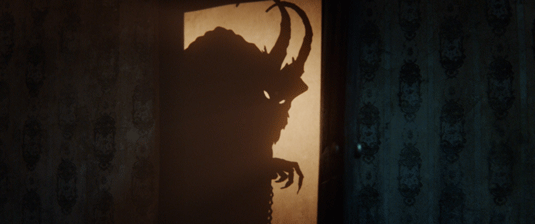
The short's focus is Omi, the only fully formed stop motion character. "We felt our Austrian Animator would have kept all the secondary characters as shadows and cut-outs," says Clayton.
"All the peripheral characters were created as 'cardboard cut-outs’ which we rigged and animated using either direct key-framing or clusters, deformers, joints... whatever got us the movement we needed. The result is a very rich and tactile piece of work, that is different in style and tone to anything we've worked on before."
Watch the trailer
Interestingly, when we a see a silhouette of Krampus in the animated flashback, Clayton and his crew had some license to reinvent his look somewhat. "The idea was we'd be seeing Krampus as Omi's six-year-old self had remembered him – in a more stylised, fairy-tale form."
"It was awesome to work on a film that used primarily practical effects," Clayton continues. "We used CG to embellish what had already been filmed, and what we did create needed to fit the already established design aesthetic and tone. It was a unique project and lots of fun to be a part of!"
Like this? Read these!

Thank you for reading 5 articles this month* Join now for unlimited access
Enjoy your first month for just £1 / $1 / €1
*Read 5 free articles per month without a subscription

Join now for unlimited access
Try first month for just £1 / $1 / €1
Get the Creative Bloq Newsletter
Daily design news, reviews, how-tos and more, as picked by the editors.

Alice Pattillo is a freelance journalist with a passion for heavy metal, horror, science fiction, fantasy and comics. She has over seven years experience in magazines, formerly working as a staff writer at Creative Bloq, Imagine FX, Computer Arts and 3D World, as production editor for Guitar World and Guitar Player and online editor of Metal Hammer.
